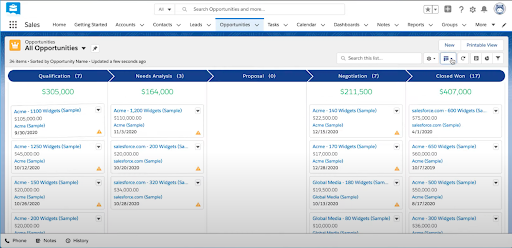If you feel like you’re spending too much time on tasks unrelated to the role you were hired for, you’re not alone. Marketers across industries report wasting considerable amounts of time on repetitive, ad-hoc, and duplicate tasks.
Despite this, 9 out of 10 marketers believe that their day-to-day jobs should be more about creating groundbreaking ideas instead of completing administrative tasks. It’s clear there is a disconnect between the work that is done versus the work that marketers want to do — so how can you or your organization tackle it?
There are 2 main steps to solving this issue: identifying tasks that waste the most time and finding the right processes or tools to make any marketer’s work more efficient. We’ve listed the biggest time-wasters that marketers face in their workflow as well as strategies to help ensure that time is more well spent.
How Marketers Waste Time
Emails and Chats
When an employee receives an email or instant message, they might feel pressured to answer it immediately. This is a real psychological phenomenon known as “telepressure”, and it can be a major productivity killer — 1 in 4 respondents in a ReportLinker survey said they feel pressure to answer instant messages right away, even if they are currently engaged in other more important tasks. Slack, Google Chat, and Microsoft Teams are common examples of instant messaging platforms that disrupt the workday.

A lot of marketers and teams tend to use omni channel communication tools such as voip phone systems which combine email, live chat, email, CRM, phone calls, voice messages and text messaging all in one place. These systems allow you to communicate more effectively and you can even have conversations with your teammates about a specific customer. We used to do this quite often at JustReachOut:
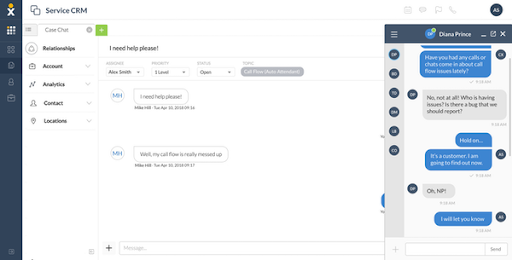
Nevertheless, instant messaging has led to increased pressure on employees to be available 24/7. This constant switching of gears can cost as much as 40% of a worker’s productivity according to research from the American Psychology Association.
Duplicate Tasks
Duplicate work refers to work that has already been completed but is done again, unnecessarily. A 2019 global study of more than 10,000 office workers revealed that marketers waste a huge amount of time on duplicate tasks — 6 hours 53 minutes each week to be exact. That adds up to a whopping 328 hours per marketer annually.
Duplicate tasks often originate from employees not having access to the correct documentation or information. To avoid wasting time, make sure that your team has access to everything they need to complete a project successfully. In that matter, consider organizing team meetings and using a Sharepoint calendar to keep your employees informed and make the process more effective.
Unnecessary Meetings
Employees spend 31 hours, on average, in unproductive meetings at work. With the average salary cost of a meeting equating to $338, that works out to be nearly $6,000 wasted per employee annually on meetings. Not to mention that employees often report feeling bored, distracted, overwhelmed, or disengaged when meetings are held.
One way to reduce meeting time is to simply block off multiple hours or even days as designated “no meeting times” or “Focus Time,” as Google calls it. This way, you guarantee that some hours of your workweek will go undisturbed. Below is an example of a Google Calendar that implements this strategy:
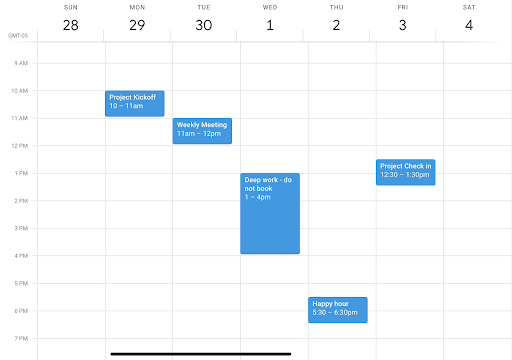
Constant One-Off or Ad-Hoc Requests
Marketers are constantly assigned tasks that support other departments’ initiatives. Though these projects may be quick to complete, these distractions add up and keep marketers from doing any real marketing. They also lead to a lack of visibility — your team may not know that you are fielding such requests, and are unable to judge your bandwidth as a result.
Finding the right balance between planned and reactive work is key. Leave some wiggle room in your marketing team’s workload to handle unplanned requests. You can also implement certain forms or tools to mitigate requests.
Manual Reporting
If you’re spending an entire day putting reports together, you’re losing 20% of your week. Instead of manually pulling numbers every week, find ways to automate reports. According to Coupler.io, automating reporting frees up to 30% of your employees’ time. Some tactics you can implement include:
- Creating formulas that will generate the answers for you in one click.
- Implementing data and reporting software.
- Setting up process workflow automation.
- Data entry and automation integration with other tools.
- Analyzing results and improving your workflow.
You can save a lot of time by automating some of the simplest tasks such as how and when you pull reports with employee time tracking software.
Listening To or Discussing Rejected Proposals
It’s fun to think outside the box when it comes to marketing proposals, but the reality is that not every proposal needs to be or – should be – entertained. While it’s great to have as many ideas on the table as possible, spending time discussing every single one may end up hurting you more than helping you.
When you collect ideas for a new project, try selecting only the serious contenders for discussion to save time and increase efficiency. If you really want to give feedback on every single idea for the sake of being courteous and transparent, you can always circulate feedback on the ideas that were not selected asynchronously.
Subscribe to
The Content Marketer
Get weekly insights, advice and opinions about all things digital marketing.
Thank you for subscribing to The Content Marketer!
How Marketers Can Save Time
There are many ways to waste time, but the good news is, that there are also plenty of ways to save time. Below are 7 ways you and your team can add valuable hours back into the workweek.
1. Use a Single Source of Truth for Requests
Keeping track of internal requests can turn into a full-time job itself. Make it easier on your team by centralizing your request system. One great way to do this is to create a standardized form or questionnaire and then circulate it throughout your organization. Google Forms, for example, lets you do exactly this. Below is an example of a form you could easily replicate for your organization:
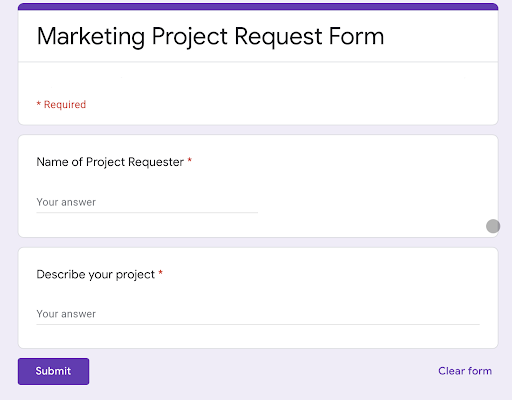
Then, as requests start to come in, keep them in a shared folder or project management tool that’s accessible to all of the relevant stakeholders.
This is also a great solution to warding off ad-hoc requests.
2. Implement Automation Software.
Automation software can be a serious boon to your marketing team’s productivity — 43% of workers say it helps them complete tasks more quickly. Automation software can be used to manage various marketing tasks like sending out marketing messages and emails across multiple channels and audiences, collecting recaps or summaries of daily performance, and scoring leads.
For example, at JustReachOut, we were able to save our sales team an average of 3 hours per day by implementing the following automation for our sales process.
Our automation begins with a prospective customer filling out the form on our book demo page. We then have an automation process in Zapier which takes the information that was entered and creates a new Deal in HubSpot and assigns it to a specific sales rep, so that SDR can easily evaluate and quickly qualify each lead.
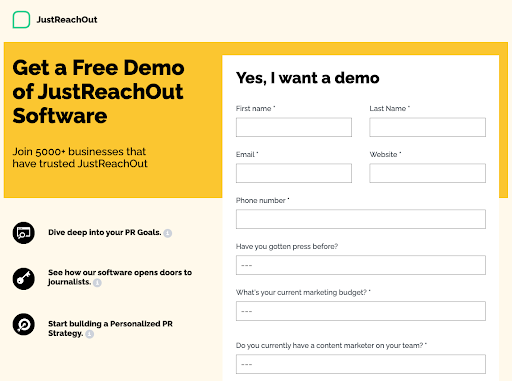
Manually entering these details into HubSpot took critical hours away from actually selling our software.
The next step is Zapier automatically scheduling a Google Meet call between sales reps and prospective customers, emailing both parties, and creating a task in Todoist for the rep.
The final automation sends a short message to the prospect 30 minutes before the call, reminding them of the appointment. This process is triggered based on the call start time and sends the message through Salesmsg to the phone number they entered on the demo landing page shown above. There is a great set of these text message examples which we drew inspiration from when creating our own.
These automated reminders, along with this entire automation, had nearly doubled the show-up rate of a prospect to a sales call — from 50% to 90%!
Something else which is important to note is that we recently switched from analog phones to a cloud-based solution that is integrated with our CRM and helpdesk software. Since the switch, we have seen a 40% savings in cost and a 3X jump in show-up rates for the demo calls. According to a recent study, businesses stand to save up to 65% when they switch from analog, citing flexibility, scalability and integrations as the main benefits of using a cloud solution.
3. Keep Your Digital Assets Organized.
While it might not seem like a big problem, the lack of the right digital asset management can have detrimental effects on your team’s performance. According to a study run in 2021, 54% of US office professionals waste time searching for documents in their online filing systems.
Without a functional digital asset management tool, marketers have to invest more time finding the right asset, and also run the risk of creating redundant documents. This can eventually lead to miscommunication issues and poor standardization processes.
To avoid this type of problem, marketers should employ online tools that let them access, archive and organize documents in an easy way. For instance, Brafton’s Content Marketing Platform features a content library that automatically archives every piece of content, making it easy to filter and find any asset.
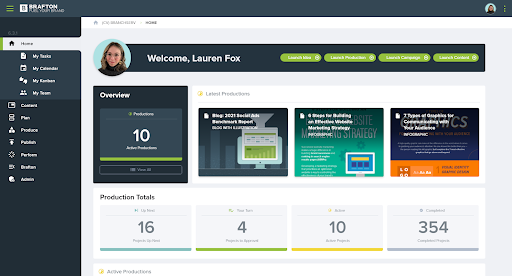
4. Automate Your Emails.
The average worker sends or receives 112 emails per day, which takes up 23% of their day. Email automation tools can save a ton of time by learning your email habits and creating response templates that sound just like an email you would write yourself.
Automate the process of writing emails that people will read and engage with, and schedule them to go out automatically at the best times. You can set up custom email flows with programs like Klaviyo and Salesforce.
Companies like Ceros schedule and send emails from team representatives for a smart and authentic experience.
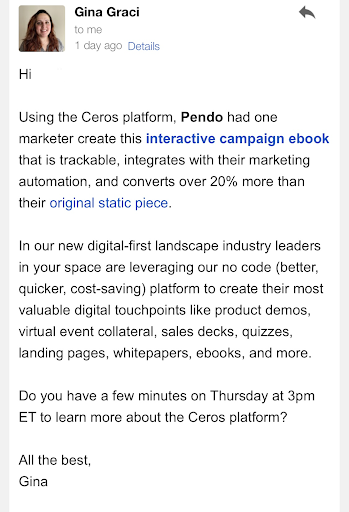
5. Build Custom Workflows for Repetitive Tasks.
You can save your team a lot of time by building workflows that do the work for you. This can take many shapes and forms, but some examples include:
- Implementing a Kanban board and project management software that’s custom-built to reflect your team’s needs. There are several alternative software solutions out there that allow you to make a Kanban board. At JustReachOut, we used a Helpscout alternative called ServiceNow to integrate Zapier’s automation tools. Our focus in doing so was to better manage inbound contacts, onboard customers more quickly and effectively, and collect valuable customer reviews.
- Creating workflows with Brafton’s Content Marketing Platform. The tool offers customizable templates that let users build workflows for every step of the content creation process. This feature helps marketers save time and set clear project timelines to keep everyone on the same page. You can use a timeline generator to help you with this step.
- Using an autoresponder software that helps you send emails to your subscribers’ inbox based on a trigger or a specific event occurring. You can automate sales emails, marketing emails, or even customer service emails. In JustReachOut’s case, sending automated customer feedback emails not only saved the team tons of time, but the number of positive reviews increased from 5% to 15%.
- Using an app to automatically find the best time to meet based on everyone’s work schedules.
6. Use a Timeline/Roadmap.
A lot of times marketers simply forget their priorities. We all get asked so many questions via email, SMS, live chat, and Slack that we feel like we’re constantly putting out fires.
To cut back on the clutter of requests and make sure everyone is working on something that is a main priority for the team, consider building a roadmap for all of your major marketing initiatives so all of your team members can follow it.
For example, every time you launch a new product feature you should have an existing product launch roadmap everyone can follow along and execute.
Preceden timeline maker tool has some templates you can simply borrow, edit and fine-tune to your team’s needs. It sure beats creating a timeline in Google slides manually. Here is a great example of a marketing roadmap template:
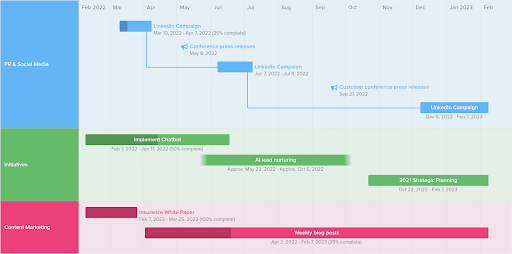
Here is a product launch roadmap:
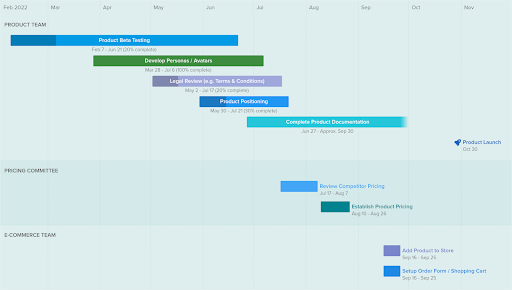
7. Integrate Your CRM.
CRMs can be expensive, but manually transferring information between sales and marketing may cost you more. Not only does it take up a ton of time out of your team’s day, but it’s also much easier to err, makes prospect tracking more difficult, and there’s a higher risk of data getting permanently lost.
There are 3 different types of CRMs; any of which could be a potential benefit to your business:
- Operational CRM: Serves as a database for storing sales and marketing information. Examples include Salesforce and Pipedrive.
- Analytical CRM: Analyzes data to provide you with valuable business insights. Examples are HubSpot with the new deal tracking feature and Zoho.
- Collaborative CRM: Makes it easy to share information between teams. Microsoft Dynamics 365 is a popular example.
Regardless of what type of CRM you implement, data sharing and transferring between different teams should be quick, seamless and accurate. You should also be able to monitor the results of your efforts to see what’s generating revenue and what’s not.
8. Try Agile Marketing.
Agile is a project management framework system that was originally created to help software developers manage their workflows, but it has since been adapted by marketing teams to do the same. At its core, Agile consists of the following basic practices:
- Sprint planning: A “sprint” refers to the amount of time it takes for a project to be completed, from start to finish. This could be anywhere from 1 week to 6 months. During sprint planning, your team will determine, realistically, how much work will get finished during a single sprint.
- Check-in meetings: Meetings that happen regularly as a way for the team to see how the project is progressing and discuss any roadblocks.
- Sprint tracking: A centralized, accessible way to track each project’s progress during each sprint, whether that’s with a project management tool, CRM, or spreadsheet. A Kanban board, like the one shown below, is another popular way to track a sprint’s progress.

Agile might be a good fit for your organization or projects if:
- Someone is willing to play the role of the project owner and be the point person for each project as it is being worked on.
- There are enough members of your team that can fully commit to completing a certain project within a strict time frame.
- Your team is willing to be disciplined enough to follow Agile’s best practices.
- Your team is collaborative enough to allow for Agile’s processes to work their magic.
Once you’ve implemented Agile, your marketing team might be more responsive, engaged and aligned with company initiatives.
There’s Always Room for Improvement
No marketing team runs perfectly, 100% of the time. That said, there are many strategies and tools out there that can make work more productive and enjoyable for not only the marketing team but your entire organization. By trying one or any combination of the strategies listed here, you’ll be well on your way to working smarter.


